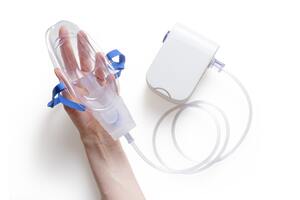14 Nov 4 Different Types of Dental Sedation: Explained
Dental sedation calms patients and reduces pain and discomfort during dental treatments or surgery. There are varying methods of sedation. These range from light sedation, which can help patients who feel anxious about visiting the dentist, to heavy sedation, which puts the patient to sleep to undergo complex surgery. All methods intend to make patients more comfortable during their procedures.
Keep reading to explore more about sedation dentistry, including the four different types of dental sedation.
1. Inhaled Minimal Sedation 
As the name suggests, inhaled minimal sedation is a light sedation inhaled by the patient. Otherwise known as laughing gas, this dental sedative uses nitrous oxide mixed with oxygen to help relax the patient. The mask is placed on the patient’s nose and mouth, allowing the patient to breathe in the nitrous oxide and oxygen. Throughout the procedure, the dentist has complete control over the amount of sedative needed.
Because this is a light sedation, the patient is conscious during the procedure. So, it wears off quickly, with minimal recovery time. Patients, in most cases, can drive themselves home after the appointment. This dental sedation is common to relax patients worried or fearful about their appointment.
2. Oral Sedation
Oral sedation is a pill taken one hour ahead of the treatment. Depending on the procedure, this form of dental sedation can produce minimal to moderate impact. In most cases, the patient will fall asleep due to the effects but can be easily awakened afterward.
Unlike laughing gas, the dentist does not have control over oral sedation. It’s why the patient takes the pill an hour before to ensure effects kick in before the procedure.
3. IV Moderate Sedation
IV moderate sedation is a dental sedation method where the patient is injected with the drug through the vein. The benefits of injecting the sedative straight into the vein include the immediate effect of the sedation. Additionally, this type of dental sedation can be used for a host of dental procedures, from having your teeth cleaned to undergoing complex surgery.
The patient will feel like they’ve been asleep because the sedative alters their perception and memory. They often have no recollection of what’s happened at all. And this eases the patient’s anxiety and any pain. The dentist has full control of these levels of sedation.
4. General Anesthesia
General anesthesia is the heaviest form of dental sedation. It is primarily used to put patients into a deep sleep during more complex procedures. This means they are entirely unconscious throughout and won’t regain consciousness again until the effects of the sedation have completely worn off. Alternatively, the dentist can administer additional medication to reverse the anesthesia.
This is generally a riskier type of sedation than the others, as the longer the patient is asleep, the higher the chance of complication.
Get In Touch
If you have any concerns about dental sedation or would like to find out more, get in touch with Kozlow and Rowell today and see how we can help.
